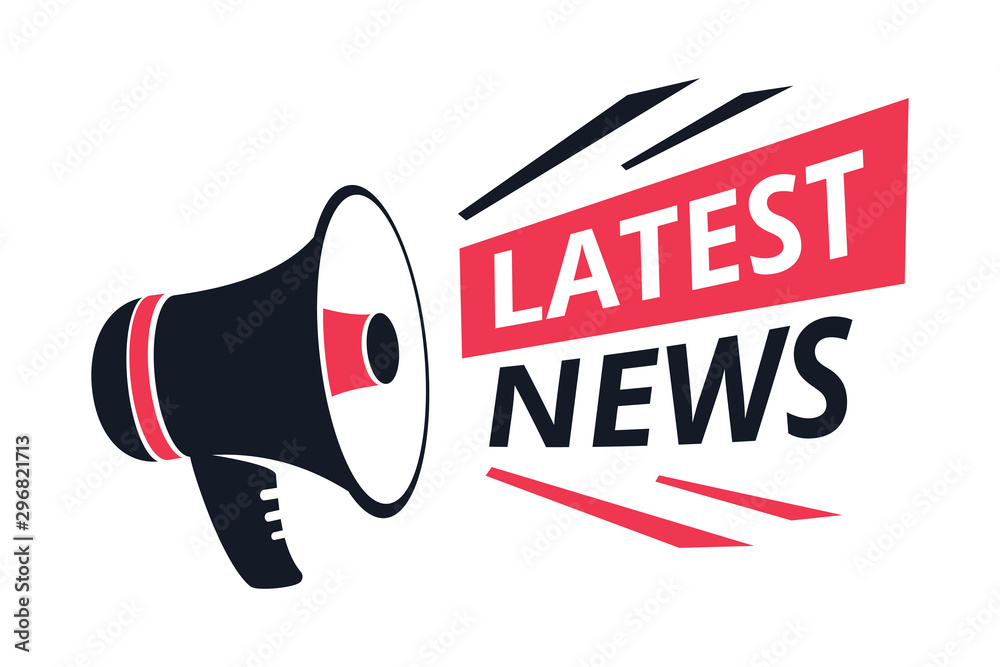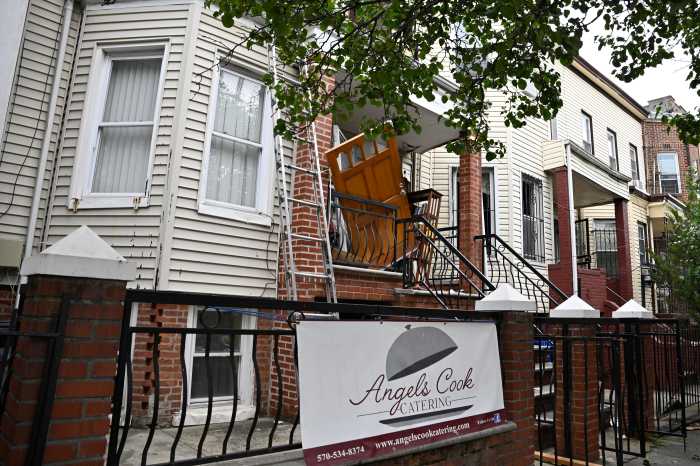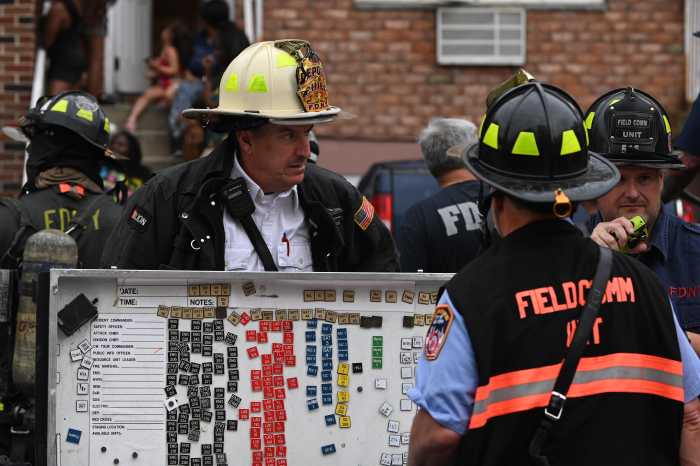The Israeli strike this morning on Iran’s nuclear and military infrastructure marks a clear turning point—not just for Iran, but for the Trump administration. This is the first major geopolitical escalation of the administration’s second term, and while Secretary of State Marco Rubio insisted the United States was not involved, the region won’t see it that way. The United States repositioned forces, evacuated diplomatic staff, and was engaged in nuclear negotiations with Iran in the days leading up to the attack, including planned talks in Oman this Sunday that Iran has now cancelled.
This is Trump’s first war, even if he tries to pretend otherwise. At the end of his first term, Trump boasted that he had started “no new wars.” That narrative may no longer hold—even if U.S. assets did not drop the bombs, the strategic implications and regional fallout will still land squarely on Washington.
What this moment reveals isn’t failure so much as contradiction. The national security system functioned just enough to warn and reposition—but not to clarify objectives, align messaging, or shape outcomes. This isn’t just a regional crisis—it’s a test of how the United States manages cascading threats under a president whose instincts often override planning.
The Intelligence Community (IC) appears to have anticipated Israeli action and supported precautionary moves. But there’s no sign that insight translated into coordinated strategy. That gap—between knowing and managing—now defines the stakes.
Iran’s Blind Spot
The Israeli strikes exposed a stunning failure of Iranian intelligence—or perhaps more precisely, a dangerous dose of overconfidence. For months, Israeli officials signaled their readiness to act despite ongoing diplomacy efforts by the Trump administration. Iran, meanwhile, appeared to misjudge the likelihood that such a sweeping attack could occur without U.S. involvement.
Whether due to an inflated sense of deterrence, faith in their deep fortifications, or flawed assumptions about Israeli political calculations, Iran was caught off guard—despite weeks of visible indicators: IAEA censure, U.S. military repositioning, and increased Israeli air activity.
The tempo and scale of the strike suggest Israel had deeper intelligence access and operational latitude than Tehran accounted for. Past Israeli sabotage operations—against Natanz, Karaj, and other sensitive facilities—and external strikes, such as the April 2024 missile attack on Iran’s consulate in Damascus that killed IRGC commander Brig. Gen. Mohammad Reza Zahedi, should have served as a warning. Yet Iran appears once again to have underestimated both Israel’s persistence and its capacity to adapt.
Tehran may have also assumed that facilities like Fordow were too hardened to be worth targeting or that political constraints and U.S. restraint would buy them more time. Early portrayals of a close Trump–Netanyahu alignment may have contributed to that perception, reinforcing a belief that Israel would not act without U.S. backing. But the relationship had grown increasingly uneven by the time of the strikes, with visible policy differences on Iran and Gaza. Tehran’s failure may have stemmed not just from misreading U.S. resolve, but from overestimating its own deterrent effect amid shifting political calculations in both capitals.
Washington Wasn’t Ready Either
Despite warnings, the response revealed improvisation, not preparation. The clearest signal was Secretary of State Marco Rubio’s vague and defensive statement shortly after the attack: a rushed declaration of U.S. non-involvement paired with an appeal for Iranian restraint.
The brevity of the statement suggests it was hastily drafted—less strategic positioning than risk containment. Trump’s public posture leading up to the strike fluctuated markedly—at one point dismissing imminent Israeli action, then warning it could “very well happen,” and even conceding it “might help” nuclear diplomacy Yet in the final 48 hours, the United States quietly repositioned military assets and began evacuating personnel, indicating that intelligence had clearly warned of an impending strike.
The U.S. national security team may have had advance warning and acted accordingly, but the gap between those operational steps and the president’s public statements points to a breakdown in coordination. Recent reporting on National Security Advisor Michael Waltz’s removal and the consolidation of roles under Secretary Rubio suggest that the White House national security structure remains unsettled.
A Test for the Intelligence Community’s Leadership
This moment will also serve as the first true global crisis test for the intelligence leadership team now serving under Trump. The events set in motion by the Israeli strike will not remain localized—they will shape regional alliances, expose U.S. vulnerabilities, and demand sustained, adaptive decision-making. The IC must be ready.
The IC has spent years warning of and responding to escalation scenarios involving Iran and its proxies, supported by deep, long-standing partnerships with Israeli intelligence—not just among senior officials, but across operational and analytic teams. What remains uncertain is whether the current leadership will let that machinery operate at full capacity, particularly given reports of increasing politicization and procedural delays.
Trump’s relationship with intelligence has long been conditional. He accepts it when it aligns with his instincts, rejects it when it does not, and often treats it as optional background rather than a tool for bounding uncertainty. The IC leaders now in place—DNI Tulsi Gabbard and CIA Director John Ratcliffe—were selected for their loyalty and alignment. But with that alignment comes responsibility. If they are not prepared to deliver hard truths or insist on analytic rigor, they will be complicit in any missteps that follow.
The infrastructure exists. The test is political. Will this administration allow the IC to play its role in shaping and moderating U.S. response, or will it fall back into its familiar habit of tuning out the briefings and improvising from the headlines? The stakes now go beyond the Israeli strikes and Iranian response. What happens in the next 72 hours could determine the trajectory of a broader regional war—and the relevance of U.S. intelligence in shaping its course.
The Houthis and the Cease-Fire Gamble
The most immediate risk of escalation lies in Yemen. Earlier this week, the Houthis explicitly threatened retaliation if Iran were attacked. That warning now looms large, as the group weighs whether—and how—to respond on Iran’s behalf.
The Israeli strikes may unravel the fragile ceasefire the United States secured just weeks ago. While the Trump administration insists Israel acted unilaterally, the Houthis—like other Iranian proxies—rarely distinguish between American and Israeli actions. For years, Iran has invested in the Houthis as both a regional spoiler and a strategic hedge.
Renewed confrontation offers the Houthis a chance to reaffirm their frontline status. That role brings expectations. Retaliation could come through resumed Red Sea strikes, direct attacks on U.S. or allied military assets, or even efforts to pull Saudi Arabia and the UAE back into active hostilities.
“Operation Rough Rider”—the U.S. campaign against the Houthis from March to May 2025—demonstrated that the group can survive and adapt under sustained pressure. They may now view escalation as both inevitable and advantageous: the price of leadership, and a test of American resilience in the face of the latest regional crisis.
The post The Israeli Strike on Iran the U.S. Saw Coming, but Couldn’t Stop appeared first on Just Security.







